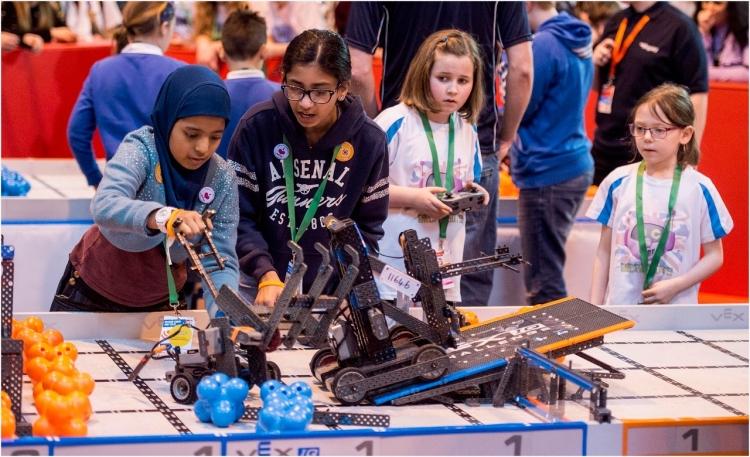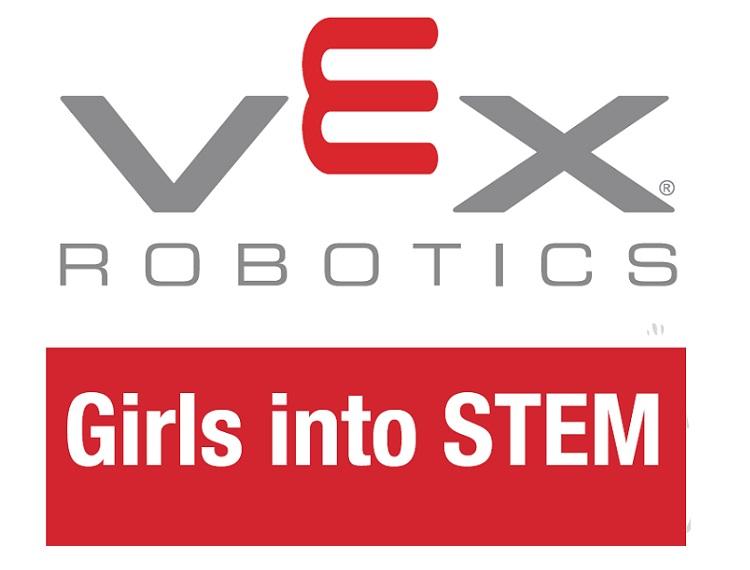HERE COME THE GIRLS! More Action Needed to Shift Perceptions of STEM Careers for Females

Ahead of the annual International Women in Engineering Day on Friday 23rd June, VEX Robotics released the findings from their Girls into STEM Initiative (GIS) carried out across UK schools. Famous names including Carol Vorderman, Rachel Riley and Tim Peake also tweeted their support for initiative to support young women.
Funded by National Grid, who want to inspire more females to enter engineering careers, VEX Robotics carried out the Girls into STEM Initiative aimed at getting more girls involved in extra-curricular competitive robotics, with a requirement for all schools and teams to have female representation. The VEX Robotics Competitions take place from April to April each year, with schools from across the country taking part. School teams are given a different engineering challenge each year in the form of a game and must create a robot able to complete that challenge. Each school competes against other teams in regional heats leading to a UK National Final. Both teachers and students were surveyed at the start and end of their first year of involvement to ascertain changing perceptions.
A study found that many engineering careers are still perceived (particularly among parents) as ‘dirty and messy’ jobs. This male-dominated stereotype is a huge challenge in schools across the UK who must try to change perceptions to STEM careers making them accessible to all. The findings of the initiative have shown that many students and indeed their influencers did not have a good idea about the variety of careers in STEM. Engineering is one of the most misinformed fields in this country demonstrated by the fact that female engineers make up just 9% of the existing skilled engineer workforce.
Following the first year of a two year programme (2015/16) 95% of females questioned said they now believed STEM subjects were fun, creative and exploratory with a huge majority of female students not only more interested in learning more about robotics but also wanting to take science or maths in both school and college. 9 out of 10 students improved their approach and confidence across all aspects of STEM learning.
The VEX Robotics Competition takes an holistic approach to STEM learning with a truly hands-on experience for all and it’s this process of design, programming, building and iterating their own robot which helps to take away the myth that robotics and engineering are jobs for the boys.
The GIS programme showed that mind-sets can shift with a different approach and delivery: training teachers to become aware of the STEM career opportunities available, maintaining a competitive atmosphere in schools where students can thrive and providing girls-only platforms so girls can unleash their potential without being hindered by misinformed prejudices.
One teacher said: ‘The girls in our school are academic and shy away from practical elements – not really sure why? Maybe it’s simply the exposure! But I must say the GIS programme has really made them sit up and notice, not just the girls but the parents also!’
Paul McKnight from VEX Robotics comments: ‘We hope that our continuing initiative with National Grid will inspire schools and influencers and ultimately students themselves to explore the multitude of opportunities STEM careers offer. We are an extremely forward-thinking nation and as such our delivery of key subjects should reflect that by being open and accessible to all. Graduates with STEM qualifications are much in demand and therefore there is a wealth of opportunities for both sexes.’ 
About VEX Robotics: A leading provider of educational and competitive robotics products to schools, universities and robotics teams around the world, their VEX IQ and VEX EDR product lines span primary and high schools with accessible, scalable, and affordable robotics solutions. Beyond science and engineering principles, a VEX Robotics project encourages teamwork, leadership and problem solving among groups. It allows educators to easily customise projects to meet the level of students’ abilities as they inspire and prepare the STEM problem-solvers of tomorrow.











Responses